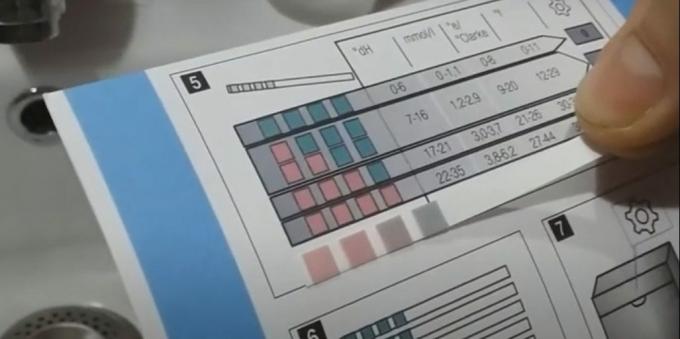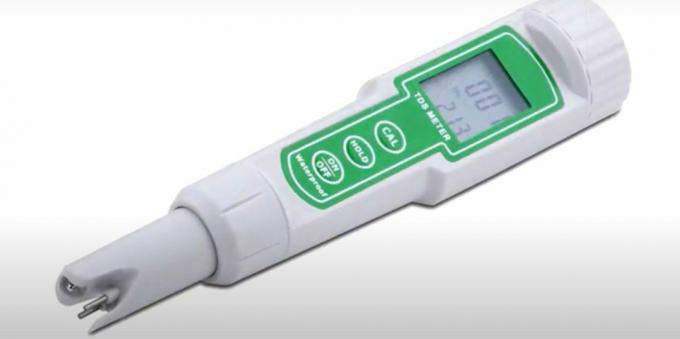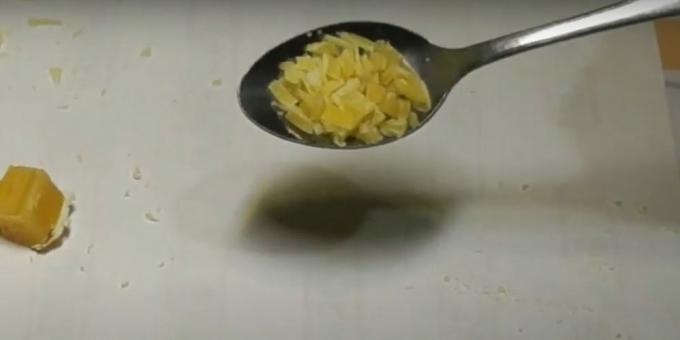How to determine the hardness of water at home
Miscellaneous / / August 01, 2021
It will take just a couple of minutes.
They call it hardHardness in Drinking-water. Background document for development of WHO Guidelines for Drinking-water Quality / WHO water with a high content of mineral salts, mainly calcium and magnesium. Salts precipitate easily and build up plaque.
This build-up makes it difficult for household appliances, such as dishwashers or washing machines, to function and may even break them. And because of it, snow-white bathtubs and sinks quickly turn yellow, and the chrome-plated surface of the mixers is covered with ugly stains.
The surest way to find out how hard water is flowing from your tap is to send a sample tube of liquid for laboratory testing. You can find out the addresses of the laboratories in the help desk of your regional Vodokanal subdivision.
But the hardness of the water is also determined independently. Here are four quick and easy ways to do it.
1. Try test strips
What is needed
- Test strips for determining water hardness. You can buy them at pet stores and appliance retailers. Alternative - strips for determining the acid-base level (pH) of the liquid.
- Cup.
What to do
Pour the water you want to measure into the glass. Dip a paper test strip with reagent squares on it into the liquid.

Remove the strip and wait about a minute (the exact duration is indicated in the instructions). Under the influence of mineral salts begins chemical reaction, and the color on the test indicator squares will change.

To determine the hardness of the water, compare the color in the indicator windows with the sample in the instructions.
If you are using pH strips, remember the general rule: the harder the water, the more alkaline it is - that is, the higher the pH value. As a rule, soft water has a pH of less than 7, hard water abovepH Levels in Drinking Water / ATS Environmental 8,5.
2. Buy a salt meter
This gadget has two electrodes that must be immersed in water. The electrodes create a flow of electrons and record the electrical conductivity of the liquid, which is closely related to the amount of magnesium and calcium salts.

What is needed
- Saline meter.
- A glass or any other container.
What to do
Pour the water, the hardness of which you want to measure, into the glass, and lower the salt meter electrodes into it.
The device will convert the electrical conductivity of the liquid into the units of water hardness accepted in a particular country, and will show the result on the screen.
In the Russian Federation, the unit of measurement is the so-called degree of hardness (° F), which is also 1 mg-eq / l. Salt meters certified in the Russian Federation work in this system.
Tough is consideredHardness of water. Soft water. Hard water. Conversion of units (degrees) of water hardness. Water hardness standards. Tables of water hardness values. Water softening. How to remove water hardness / Engineering handbook. DPVA.ru tables water with an indicator of more than 8 ° J. A value from 4 to 8 ° W corresponds to medium hard water.
3. Use laundry soap
This method is based on one of the key features of hard water: it is badHardness in Drinking-water. Background document for development of WHO Guidelines for Drinking-water Quality / WHO lather is formed. It will require a little chemistry experiment.
What is needed
- Laundry soap.
- Grater.
- Electronic kitchen scale.
- Tea spoon.
- Distilled water. You can buy it at hardware stores or gas stations.
- Tumbler.
- Ruler.
- Measuring glass with a capacity of 1 liter or a liter jar.
What to do
Rub a little laundry soap on a grater and measure exactly 1 g on a scale. If suddenly you do not have scales, focus on the volume: the crushed soap will take about half a teaspoon without a slide.

Place the soap in a glass and add 3-4 tablespoons of warmed distilled water. Gently, so as not to form a lot of foam, stir until completely dissolved.
Then, using a ruler, add distilled water to a height (in millimeters) equal to the percentage of fatty acids in soap. For example, if you took a standard soap labeled 72%, the height of the water in the glass should be 72 mm. Keep in mind that the glass pan also has a certain thickness, so measure the water column from the bottom, not from the table surface.

Stir the soap solution gently again. Remove foam gently if it has formed. Now there is so much soap in every centimeter of water column to bind all hardness salts in 1 liter of distilled water, if their concentration is 1 ° dH (German degree of hardness).
Pour 0.5 liters of cold tap water into a measuring cup or jar. Pour soap solution into the container in a thin stream and stir gently until you notice that a stable white foam has formed on the surface of the liquid. Its appearance means that the soap has completely bound the hardness salts.

Measure the height of the remaining soap solution in the glass and subtract it from the original height. So you find out how many centimeters of the solution were poured into a measuring container.
Each centimeter of the poured solution bound the amount of hardness salts corresponding to 2 ° dH in half a liter of tap water. This means that if, for example, 6 cm of solution had to be poured to create foam, the hardness of the tap water is 12 ° dH.
To convert German degrees to those used in the Russian Federation, you can use the online calculatorWater hardness calculator / Mosvodokanal on the Mosvodokanal website. 12 ° dH = 4.3 ° W, which corresponds to medium hard water.
4. Use a mirror
This method will allow you to guess how hard the water is flowing from the tap. But it will not give a specific meaning.
What is needed
- Mirror.
- Pipette.
- Distilled or boiled water.
What to do
Using a pipette, apply a drop of tap and distilled water onto a horizontal mirror surface. Wait for the liquid to evaporate. And then analyze the two specks with sediment remaining on the glass.
The more saturated the sediment from tap water, the more it differs from the almost imperceptible trace of distilled water, the higher the hardness.
Read also🧼🧹🚿
- 20 new ways to use cleaning products you already have at home
- How to quickly clean a bath without ruining it
- How to bleach tulle without special household chemicals
- How to clean your shower head: 6 easy ways
- How to clean a dishwasher
The authoritative scientific journal Nature wrote about the safety and effectiveness of "Sputnik V"
Scientists have shown a prototype of a protective mask that can test for coronavirus



